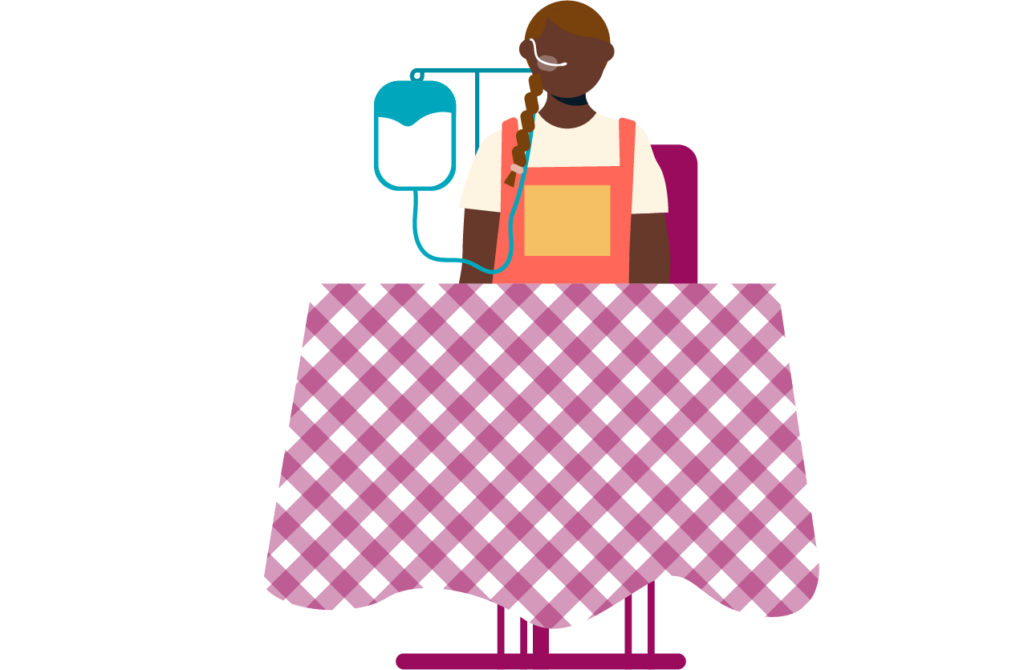Eating meals - hints and tips
Mealtimes are important: family mealtimes are when children can copy the grown-ups using cutlery, learn social skills and promotes sensible eating habits.
Here are some ideas and activities to promote the development of mealtime skills.
- Involve your child in the self-feeding process as early as possible
- Whenever possible, ensure that your child is sitting at a table, well supported and at the
right height. It is important that their feet are supported so that they can use their hands
freely. Chairs with adjustable height seats and footrests are widely available - The first thing for parents and carers to consider is try not to worry about mess. When a
child is learning this skill, it will be messy. This is an important stage in their development - Practice feeding with cutlery when time is not so pressured
- Using cutlery is a three-stage process; introduce the spoon, then the fork, and finally the
knife - Consider the size and shape of cutlery. Try and make it fun with a favourite character or
brightly coloured cutlery - Lead by example. Try to eat with your child when you can so they have the opportunity to
copy you - Practise during playtime is a great opportunity to integrate this skill. An imaginary tea party
or by pretending they are feeding dolls or teddies for example - A good way to teach your child how to eat meals is to break down each task into small steps
and teach them the last step first. This technique is called backward chaining (please see
backwards chaining handout for details). Once they can do the last step of the task, teach
them the second-last step, then the third-last step and so on
Pre-eating activities and games
The following activities require coordinated use of both hands and are similar skills required for
using cutlery effectively. They can be practiced in a playful way to develop hand skills. This should
also support more successful use of cutlery during self-feeding.
- Hammering activities e.g. Tap-a-Shape, toy work tools
- Scooping non-food items such as sand or small stones into a bucket
- Colouring – steady the paper with one hand whilst the other colours
- Construction games – E.g. Lego, bead threading, K’nex
- Cooking / Baking – any two handed task, e.g. mixing bowl and spoon
- Using playdough / modelling material – use cutlery to cut
